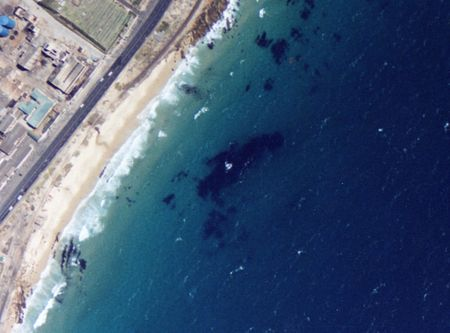The SS Clan Stuart was blown ashore in 1914 between Glencairn and Simon's Town, along Cape Town’s west coast. The SS in the vessel's name stands for ‘steamship’. This steamship was built by W. Doxford and Son in 1900, in Sunderland, England (Barnardt, 2013). It was a triple expansion steam engine ship, weighing 3,594 tons, but it was not designed to withstand strong weather conditions (Barnardt, 2013). This design meant that most of the ship would be below the waterline, the method has become known as the turret deck principle (Mitchell, n.d.). This is particularly interesting as the ship was used as a cargo ship, used to transport bulk goods across the sea. It was designed to overcome the size restrictions of the Suez Canal as ships were taxed larger fees depending on the vessel’s width.
This design meant that the vessel had a large hull and the waterline was very high, meaning that only a small section of the boat was seen above water (Barnardt, 2013). The hull is the part of a ship that is water resistant; the walls of the ship, it is what protects the ship from the weather. The less there is below water, the more it is visible above the waterline, and the more likely the ship is to survive ravaging storms. The SS Clan Stuart’s design meant that the vessel would “roll badly in heavy swells and pilots boarding or leaving the ship during poor weather condition(s) experienced serious difficulties” (Barnardt, 2013).
Archaeologists and historians are yet to come to a consensus on how The SS Clan Stuart arrived in South Africa, as there are three versions of her journey. One version says the steamship was delivering a shipment of coal from St. Helena, an island on the west coast of Africa, to Wales. Another version claims she was returning, after a successful coal delivery. While the third says that she was delivering coal to St. Helena (Barnardt, 2013). One thing is common amongst these theories, the SS Clan Stuart arrived in Simon’s Town to deliver coal.
The SS Clan Stuart was anchored but caught off guard by a south-easter gale force wind in the early hours of November 1914. The ship was dragged onto the ocean floor, as her anchor caught the rocks near Glencairn beach. The crew was rescued by lifeline; that is the rope that one can see on a boat, it is used to ensure the crew has something to hold onto when danger strikes. They also managed to use the lifeline to retrieve the cargo. The Clan Stuart was towed to Simon’s Town dry docks by a tugboat, called Ludwig Wiener. Unfortunately, the steamship was denied permission to enter until some repairs were done, this was because the people at the docks feared she would fill with water while at the channel. The captain was forced to take her to Mackerel Beach just 100 metres from the sandy beach, where she was chained to the beach and stabilised with two anchors (Barnardt, 2013).
Unfortunately, the repairs were futile. Once the ship was refloated, the engine room was flooded. Today, one can see the ship, wrecked, on the shallow Mackerel Beach. The site was declared a protected area in 2004 (Barnardt, 2013). A permit is required for any research to be done on the site.
